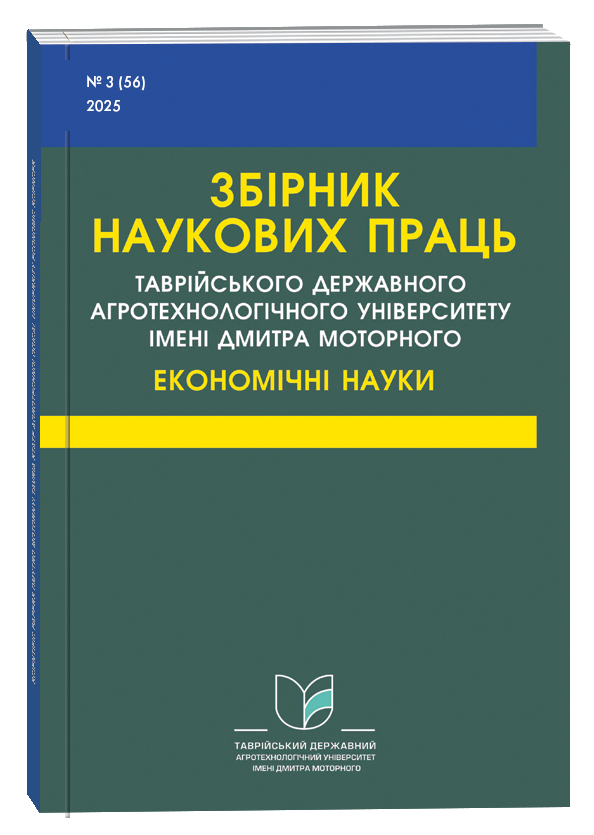МУЛЬТИКУЛЬТУРНІ КОМУНІКАЦІЙНІ СТРАТЕГІЇ ДЛЯ РИНКОВОГО ПРОСУВАННЯ ОСВІТНІХ ПОСЛУГ УКРАЇНСЬКИХ ЗВО
Анотація
У статті досліджено проблему декларативного характеру маркетингових стратегій та відсутності системних економічних механізмів моніторингу їх ефективності в українських закладах вищої освіти (ЗВО). Проведено порівняльний аналіз підходів до маркетингової аналітики в університетах України та Польщі. Виявлено, що польські ЗВО, функціонуючи в умовах жорсткої ринкової конкуренції, демонструють більш зрілу, керовану практиками культуру використання кількісних показників. Натомість в Україні існує значний «розрив виконання» між централізованими стратегічними цілями та їх практичною реалізацією на інституційному рівні. На основі аналізу ключових показників ефективності, таких як рентабельність інвестицій (ROI) та вартість залучення студента, запропоновано комплексну трьохрівневу модель моніторингу, адаптовану для українських ЗВО, що сприятиме підвищенню підзвітності та конкурентоспроможності.
Посилання
Лісун Я. В. Цифровий маркетинг і брендинг вищої освіти в Україні та країнах Європи. Economics and Business Management. 2023. Т. 14, № 3. С. 73–80. DOI: https://doi.org/10.31548/economics14(3).2023.073
Kisiołek A., Karyy O., Halkiv L. The utilization of Internet marketing communication tools by higher education institutions: A comparative study between Poland and Ukraine. Journal of Business Research. 2022. Vol. 141. P. 102–115. DOI: https://doi.org/10.1016/j.jbusres.2022.08.039
Анісімова О., Василенко В., Федушко С. Соціальні мережі як інструмент формування іміджу закладу вищої освіти. arXiv:2102.05629. 2021. 15 с. URL: https://arxiv.org/abs/2102.05629
OECD. Higher Education Internationalisation: Global Perspectives. Paris: OECD Publishing, 2022. 90 с. DOI: https://doi.org/10.1787/ghi890jkl123
Lee J., Kim H. Social media strategies in Korean universities. Education Sciences. 2023. Vol. 13, № 4. P. 321–335. DOI: https://doi.org/10.3390/educsci13040321
HubSpot. State of Marketing Report 2024. URL: https://www.hubspot.com/marketing-statistics
DAAD. International Marketing Tools for German Universities. Bonn: DAAD, 2024. 85 с. URL: https://www.daad.de/en/marketing
European Commission. Erasmus+ Programme Guide. Brussels: EC, 2024. URL: https://erasmus-plus.ec.europa.eu/programme-guide
Пасічний Р. Цифрова трансформація вищої освіти як драйвер інтеграції з Європою. Brazilian Journal of Education, Technology and Society. 2024. Т. 17, № 1. С. 45–58. URL: https://brajets.com/index.php/brajets/article/view/1234
Гаєвська Л., Заяць Д., Кушнірюк В. Цифрова трансформація вищої освіти в контексті глобалізації. Brazilian Journal of Education, Technology and Society. 2024. Т. 17, № 1. С. 30–44. URL: https://brajets.com/index.php/brajets/article/view/1233
Lisun, Ya. V. (2023). Digital marketing and branding of higher education in Ukraine and European countries. Economics and Business Management, vol. 14, no. 3, pp. 73–80. DOI: https://doi.org/10.31548/economics14(3).2023.073
Kisiołek, A., Karyy, O., & Halkiv, L. (2022). The utilization of Internet marketing communication tools by higher education institutions: A comparative study between Poland and Ukraine. Journal of Business Research, vol. 141, pp. 102–115. DOI: https://doi.org/10.1016/j.jbusres.2022.08.039
Anisimova, O., Vasylenko, V., & Fedushko, S. (2021). Social networks as a tool for a higher education institution image creation. arXiv:2102.05629. Available at: https://arxiv.org/abs/2102.05629
OECD. (2022). Higher education internationalisation: Global perspectives. Paris: OECD Publishing. DOI: https://doi.org/10.1787/ghi890jkl123
Lee, J., & Kim, H. (2023). Social media strategies in Korean universities. Education Sciences, vol. 13, no. 4, pp. 321–335. DOI: https://doi.org/10.3390/educsci13040321
HubSpot. (2024). State of Marketing Report 2024. Available at: https://www.hubspot.com/marketing-statistics
DAAD. (2024). International marketing tools for German universities. Bonn: DAAD. Available at: https://www.daad.de/en/marketing
European Commission. (2024). Erasmus+ Programme Guide. Brussels: EC. Available at: https://erasmus-plus.ec.europa.eu/programme-guide
Pasichnyi, R. (2024). Digital transformation of higher education as a driver of integration with Europe. Brazilian Journal of Education, Technology and Society, vol. 17, no. 1, pp. 45–58. Available at: https://brajets.com/index.php/brajets/article/view/1234
Gaievska, L., Zaiats, D., & Kushniryuk, V. (2024). Digital transformation of higher education in the context of globalization. Brazilian Journal of Education, Technology and Society, vol. 17, no. 1, pp. 30–44. Available at: https://brajets.com/index.php/brajets/article/view/1233

